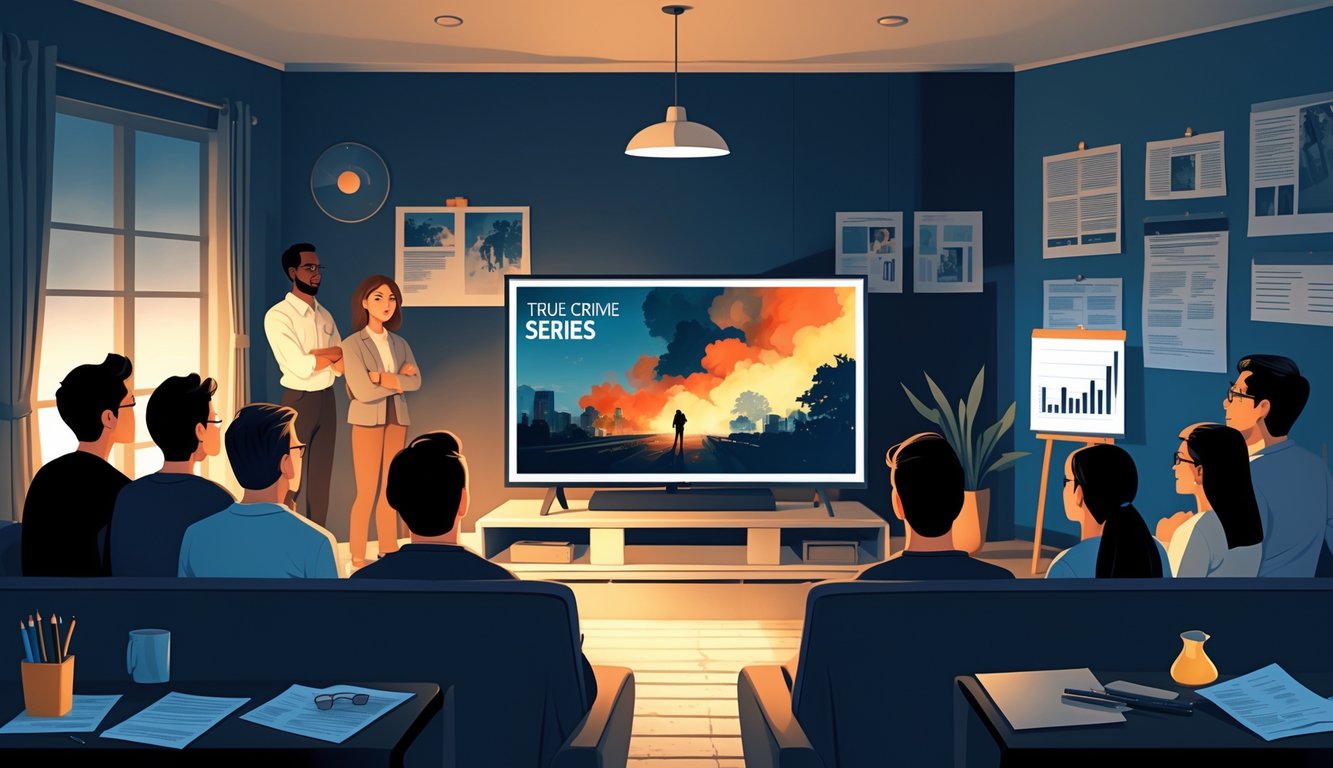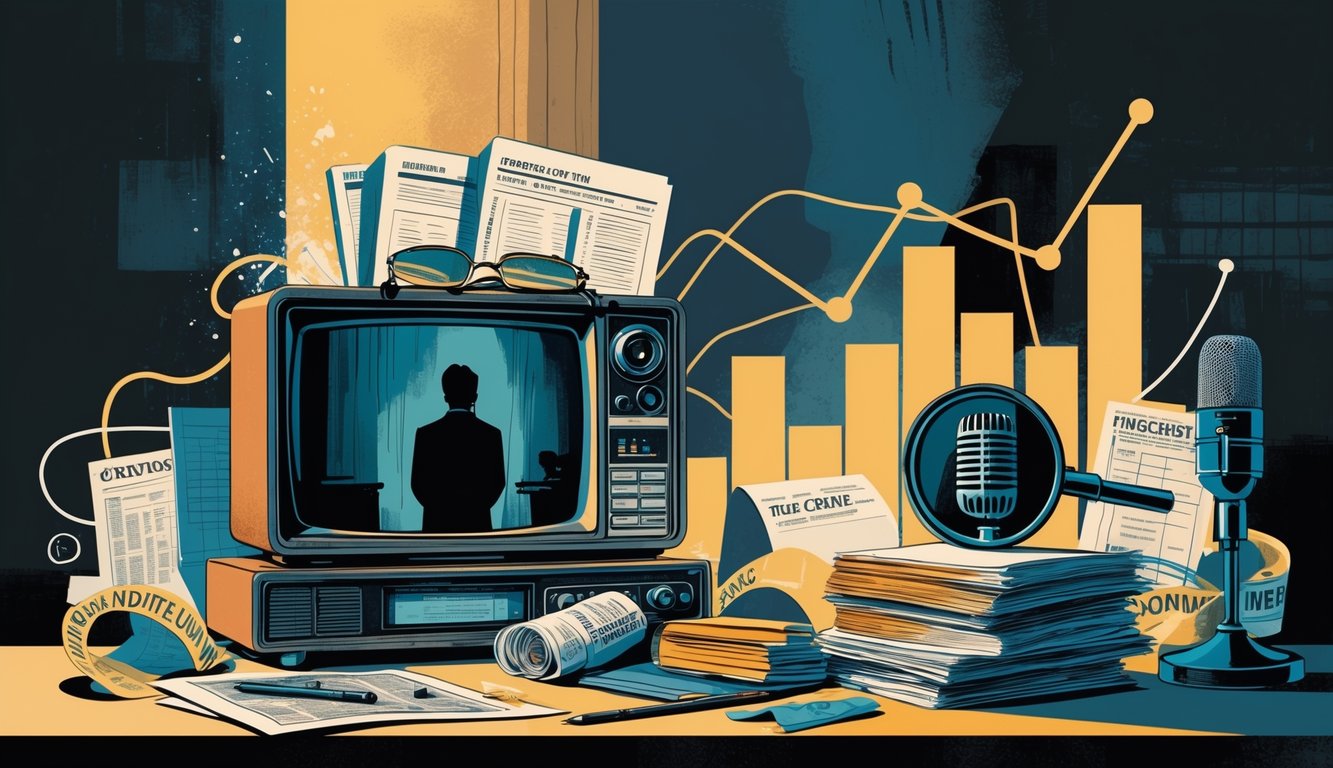
Iconic Series and Their Cultural Impact

Honestly, every so-called “water cooler” moment now is just my group chat dissecting Netflix or HBO Max shows. There’s no actual cooler, but somehow these series spill into every conversation—murder cases at brunch, why not. Nothing’s ever resolved, but people still get obsessed. One minute, it’s a docuseries, next minute, someone’s wearing the killer’s outfit for Halloween.
Making a Murderer and the Steven Avery Case
Making a Murderer just wrecked my sense of certainty. Police audio, court docs, forensics (yes, I said it twice, it matters)—all of it gets shredded and reassembled. Why did I start doubting DNA? In 2015, it drew in over 19 million viewers in just over a month. No one was calm about it.
Steven Avery went from random Wisconsin guy to villain to folk hero to… I don’t even know. Local lawyers were rage-posting on Twitter, professors had to explain coerced confessions in panels, and suddenly wrongful conviction was dinner table talk. My cousin literally drove to Manitowoc County hoping to find clues. People mailed Avery letters, the case trended, and sociologists started writing essays about true crime culture, not just legal nerds.
The Jinx: Robert Durst’s Story
After I finished The Jinx, I kept muttering, “killed them all, of course” under my breath. Not normal. Robert Durst, billionaire weirdo, confesses on a hot mic in the bathroom—how is that even real? HBO’s series used old news clips, handwriting analysis, and those “accidental” moments that just made the whole country spiral into conspiracy mode.
The editing—jump cuts, real evidence, sudden reveals—dragged me into a paranoia spiral. Top trial lawyers admitted on podcasts that no show finale ever led to a real arrest the next day. Durst got nabbed in New Orleans with latex masks, cash, and a loaded gun. If your book club wasn’t debating his blinking or the ethics of on-camera confessions, you missed out. After watching, I started wondering if any rich recluse is just eccentric, or if they’re all hiding something. Or maybe I’m just paranoid now.
Tiger King and the Wild Appeal of Eccentric Characters
Joe Exotic. Carole Baskin. Tiger cubs. Lawsuits over expired Walmart meat. Tiger King made zero sense—sequined holsters, big cats, pandemic lockdown, and somehow it all worked. My family dinner turned into a debate about hiring hitmen via text. American or just insane?
Millions streamed this docuseries during lockdown. Law professors started talking about “zoo liability” in class, Etsy exploded with “That B**** Carole” banners, and my old roommate started breeding frogs instead of tigers. I still don’t get it.
The craziest part? Suddenly everyone’s an expert. My feed was full of wildlife law hot takes and polyamory think-pieces. No one studied either, but true crime made everyone feel like an insider.
Anthology Series and Franchise Power
Why does everyone act surprised when these crime anthology series blow up? Wasn’t it obvious? Audiences want to jump in, obsess over one case, then move on. No commitment. Somehow, just slapping a familiar brand on a show means people show up, even if there’s zero connection between seasons. Underbelly in Australia? It just spiraled into a franchise monster. People don’t care about the same characters—they want the next big case.
American Crime Story and Ryan Murphy Innovations
Ryan Murphy’s machine never stops, but not how you’d expect. American Crime Story turns tabloid messes into prestige drama—cardigans, high-profile lawyers, the works. Switching from O.J. Simpson to Gianni Versace to Bill Clinton? Somehow, people loved it. Who else does anthology like that and still wins Emmys?
It’s not just about juicy cases. Murphy nails the casting, sharp scripts (that “If it doesn’t fit…” line is stuck in my head), and timing that somehow makes nostalgia a weapon. Someone told me, “He waits for people to forget, then reminds them with a punch.” The numbers back it up—millions watched live, then millions more streamed it later. FX just keeps re-ordering, and networks can’t get enough. Not a shock, honestly.
Night Stalker: The Hunt for a Serial Killer
So, yeah, Netflix decided to drop Night Stalker: The Hunt for a Serial Killer and now everyone’s a sudden expert on Richard Ramirez. My aunt, who can’t even work her phone, claims she “remembers hearing about him on the news.” Sure, Jan. The docuseries? All those moody black-and-white photos, jumpy police interviews, the editors just mash it together and suddenly it’s the only thing anyone talks about for a week. Everyone’s texting, “Did you know he wore Avia sneakers?” Like, okay, and? My cousin swears Ramirez once tailgated him on the 5. Completely made up.
But here’s the thing: the show doesn’t really use those “talking head” experts with perfect hair. It’s all about the weird details—shoe prints, bad composite sketches (why do they always look like that guy from HR?), rookie reporters screwing up facts. According to Netflix’s own stats, people got obsessed. “Night Stalker” hit the top ten globally, which I guess proves we’ll binge anything as long as it’s got a body count and no homework. I still don’t get why every sketch artist draws the same creepy uncle, but apparently that’s just how it is.



